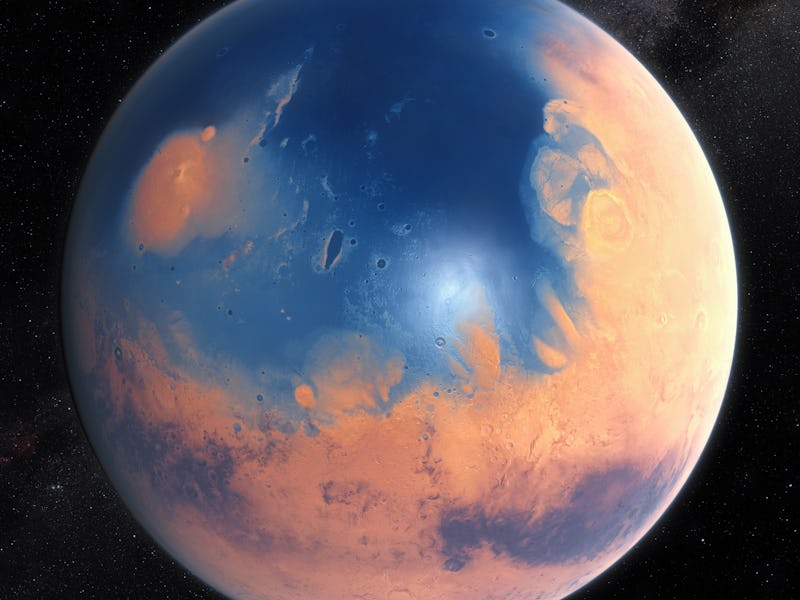Mars Had Lakes of Water Way More Recently than We Thought

We knew Mars had water, but until now, we figured it all dried up long ago. It turns out, the red planet may have been wet a lot more recently than we thought.
Some liquid water lakes and streams formed on Mars billions of years later than scientists previously thought, according to a new study published in the Journal of Geophysical Research, Planets, suggesting that Mars may have been habitable, and could have potentially hosted primitive forms of life.
Using data acquired by NASA’s Mars Reconnaissance Orbiter, the research team, led by Sharon Wilson from the Smithsonian Institution in Washington, D.C., examined images of ancient valleys that were carved out by lakes and rivers of old. Nothing unusual there — NASA has collected a trove of evidence that confirm that a warmer Mars was teeming with lakes and oceans of liquid water billions of years ago.
What’s different here, however, is that these particular valleys and dried basins — located in Mars’ northern Arabia Terra region — were host to water much later, at a time when Mars was thought to be a cold, dry rock.
Valleys much younger than well-known ancient valley networks on Mars are evident near the informally named "Heart Lake" on Mars.
“One of the lakes in this region was comparable in volume to Lake Tahoe,” Wilson said in a news release. Lake Tahoe, located in California and Nevada, holds about 45 cubic miles of water. “This particular Martian lake was fed by an inlet valley on its southern edge and overflowed along its northern margin, carrying water downstream into a very large, water-filled basin we nicknamed ‘Heart Lake,’ a valley system that is estimated to have once held more water than Lake Ontario.”
For astrobiologists and extraterrestrial researchers, water is the single most critical factor in assessing whether life could evolve on another world. This new data indicates that the old lakes formed on the planet between two and three billion years ago — roughly a billion years after it was assumed Mars had lost too much of its atmosphere to sustain liquid surface water.
Overall, it means the red planet might have been able to sustain microbial life for a longer time.
The new — or rather, less ancient — lakes themselves show rates of water flow that are “consistent with runoff from melting snow,” Wilson said. “These weren’t rushing rivers. They have simple drainage patterns and did not form deep or complex systems like the ancient valley networks from early Mars.”
If Mars was more habitable later than initially predicted, scientists would do well to dig into Arabia Terra valleys and look for fossils that could perhaps show evidence of ancient Martians. That will only be possible if were able to send a robot or even human equipped with conducting such a paleontological dig, but with the Mars 2020 rover launching soon and with NASA nearing its goal to send astronauts to the red planet in a couple decades, we might have answers sooner rather than later.